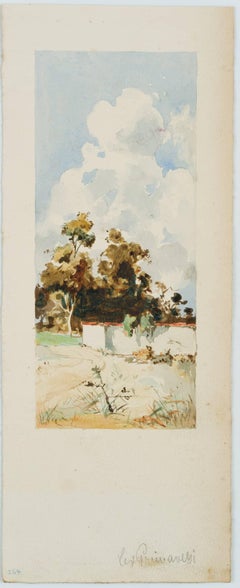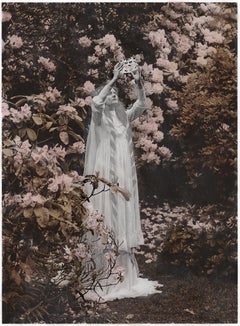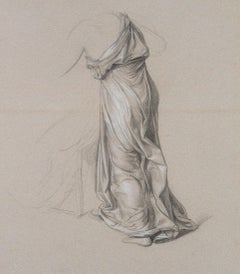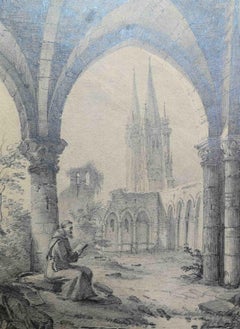Romantic Art
In emphasizing emotion and imagination, romantic art shifted away from the restraint of classicism and neoclassicism that had dominated art in Europe since the Renaissance. Romanticism achieved its greatest popularity in art, literature, music and philosophy between 1780 and 1830, although its expression of individual experiences ranging from awe to passion informed culture in the decades after.
Landscape painting was especially popular during the romantic period, as were nature studies of wild animals and fantasies of exotic lands. Romanticism varied across Europe as it reacted to the rise of industrialization, a more personal relationship with faith that was distanced from the church and the rationalist thinking of the Enlightenment.
British painters such as John Constable and J.M.W. Turner responded dramatically to the light and atmosphere of the natural world, while William Blake conveyed humanity’s connection to the divine in his visionary art. In Germany, the late-18th-century Sturm und Drang, or Storm and Drive, movement, with its probing of the unconscious, inspired a sense of mystery in work by romantic artists such as Caspar David Friedrich and Philipp Otto Runge. In France, where the French Revolution had turned tradition upside down, Théodore Géricault and Eugène Delacroix used lush brushwork to paint monumental canvases with tumultuous scenes of nature and history.
The romantic movement and its subject matter were a significant influence on the Pre-Raphaelites, Symbolists and the American painters of the Hudson River School, as well as on other cultural movements in the 19th and 20th centuries that saw artists build on this perspective in which art was guided by emotion rather than reason.
Find a collection of romantic paintings, sculptures, prints and multiples and more art on 1stDibs.
21st Century and Contemporary Romantic Art
Bluestone
20th Century Romantic Art
Paper
2010s Romantic Art
Archival Pigment, Photographic Paper, Watercolor, Photographic Film
19th Century Romantic Art
Paper
19th Century Romantic Art
Paper
Early 19th Century Romantic Art
Paper, Pencil
Late 19th Century Romantic Art
Carbon Pencil, Cardboard
19th Century Romantic Art
Handmade Paper
19th Century Romantic Art
Canvas, Oil
19th Century Romantic Art
Paper
20th Century Romantic Art
Oil, Board
1870s Romantic Art
Gesso, Oil, Board
19th Century Romantic Art
Canvas, Oil
2010s Romantic Art
Wood Panel, Oil
1830s Romantic Art
Pencil
1820s Romantic Art
Paper, Pencil, Chalk
19th Century Romantic Art
Canvas, Oil
Late 19th Century Romantic Art
Canvas, Oil
Mid-19th Century Romantic Art
Marble, Bronze
Mid-19th Century Romantic Art
Oil
Mid-19th Century Romantic Art
Oil, Panel
19th Century Romantic Art
Oil, Panel
Late 19th Century Romantic Art
Canvas, Oil
19th Century Romantic Art
Canvas, Oil
1830s Romantic Art
Oil
Early 20th Century Romantic Art
Oil, Canvas
Late 19th Century Romantic Art
Oil, Panel
1850s Romantic Art
Oil
Mid-19th Century Romantic Art
Canvas, Oil
1960s Romantic Art
Mixed Media, Gouache, Pencil, Graphite
Early 2000s Romantic Art
Canvas, Oil
1840s Romantic Art
Watercolor
2010s Romantic Art
Oil, Canvas
2010s Romantic Art
Canvas, Oil
1990s Romantic Art
Watercolor
1990s Romantic Art
Canvas, Oil
19th Century Romantic Art
Lithograph
1910s Romantic Art
Canvas, Oil
1890s Romantic Art
Paper, Watercolor
1920s Romantic Art
Lithograph
1920s Romantic Art
Lithograph
Late 19th Century Romantic Art
Canvas, Oil
1920s Romantic Art
Lithograph
1920s Romantic Art
Lithograph
1920s Romantic Art
Lithograph
1920s Romantic Art
Lithograph
Early 19th Century Romantic Art
Canvas, Oil
1920s Romantic Art
Lithograph
1920s Romantic Art
Lithograph
1920s Romantic Art
Lithograph
1920s Romantic Art
Lithograph
Mid-19th Century Romantic Art
Paper, Watercolor
1920s Romantic Art
Lithograph
1920s Romantic Art
Lithograph
1920s Romantic Art
Lithograph
1920s Romantic Art
Lithograph
1920s Romantic Art
Lithograph
1920s Romantic Art
Lithograph




